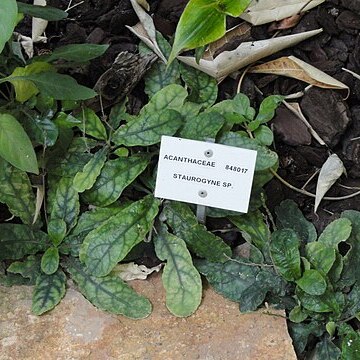Annual or perennial herbs or small shrubs, without cystoliths. Stems very short or elongate. Leaves in a basal rosette or cauline, opposite (or alternate, especially apically), petiolate or sessile; leaf blade margin entire or nearly so. Inflorescences terminal or axillary, racemes or spikes; bracts opposite or alternate, leaflike or usually well differentiated from leaves; bracteoles present. Calyx 5-lobed almost to base; lobes equal or unequal. Corolla tube cylindric or basally cylindric and apically expanding into a campanulate throat; limb subactinomorphic to 2-lipped, 5-lobed; lobes subequal, patent, descending cochlear in bud. Stamens 4, didynamous, included or anterior pair slightly exserted; filaments usually hairy; anthers 2-thecous; thecae parallel, usually equal; staminode 1 or more, sometimes absent. Ovary with usually 12-60 ovules arranged in 2 or 4 rows per locule; style glabrous; stigmas 2-lobed, sometimes repeatedly 2-lobed. Capsule oblong, many seeded; retinacula absent. Seeds minute, subspherical or cuboid.
Herbs or shrubs; stems, erect, ascending, or repent, terete or subquadrangular, glabrous or pubescent, hairs often glandular. Leaves usually petiolate, entire. Flowers sessile or short pedicellate, few to many, in terminal or axillary spikes or racemes; calyx deeply 5-segmented, posterior segment oblong, usually con-spicuously longer and broader than the others; corolla usually red, purple or yellow, cylindrical, bilabiate, the upper lip 2-lobed, the lower lip 3-lobed, the lobes rounded; stamens 4, didynamous, usually included, a staminode usually present between the posterior pair, the anthers 2-celled, the sacs subequal, rounded. Capsules oblong, obtuse, seeds borne the entire length, retinacula absent; seeds numerous, minute, subglobose.

